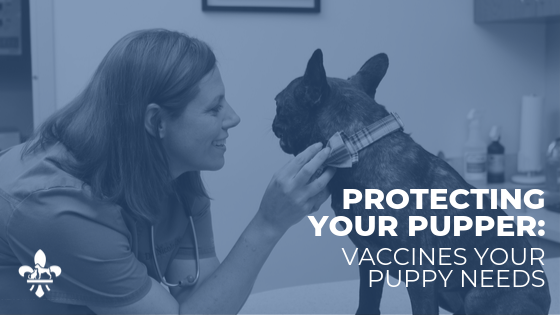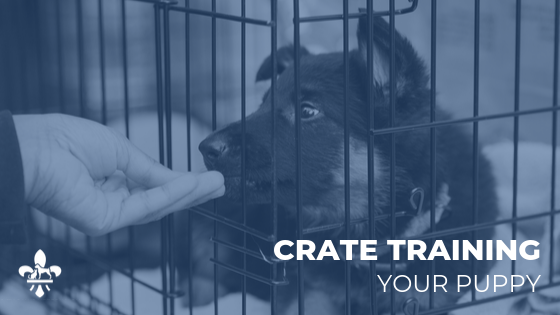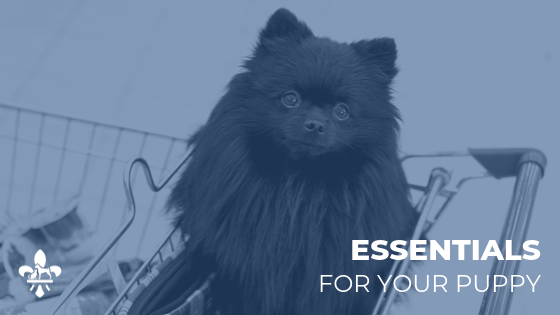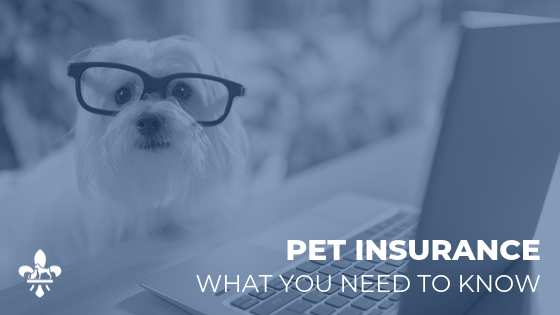|
An important part of the puppy training process, and in some cases, for adult dogs who need a refresher, is finding the right trainer. Being in an urban area, St. Louis area dog owners are lucky to have a variety of choices. Slick marketing and added-convenience features can make some trainers seem wonderful, but our veterinarians strongly recommend that you spend some time learning more about the trainers and their methods before enrolling your dog. We recommend you choose trainers who only employee positive reinforcement training techniques, and avoid shock collars, pinch/prong collars, or other forms of negative correction.
We’ve compiled a list of trainers that are recommended by Dr. Colleen Koch, a St. Louis area veterinary behaviorist (that’s a veterinarian who has done an ADDITIONAL several years of exclusive behavior-only residency, research and training after graduating as a general practice veterinarian), as well as trainers who as of September 2018 were certified as Fear Free trainers. This list is not all-inclusive, and there may be other great trainers in the area that we haven’t learned about yet, so if you’ve found another trainer you’d like to work with, check out this article on what questions to ask to learn more about their methods! Download our Recommended Trainer List here!
0 Comments
Many serious diseases can be prevented with vaccinations. With nearly 90 million pet
dogs in the United States, your pet is likely to come in contact with an infectious disease at some point in their life. Even if your pet is indoors, your dog can be exposed to viruses carried in the air, in dust, or on clothing. Vaccination is a safe and inexpensive protection against costly, and in some cases, deadly diseases. Our hospital follows the recommendations of the American Animal Hospital Association for general guidelines, but also works with you to customize your pet’s vaccination program based on their age, breed and lifestyle! Here are the diseases our general vaccination protocols will protect your dog against: DISTEMPER Canine distemper is a very contagious and deadly disease caused by a virus. Dogs and ferrets as well as certain species of wildlife, such as raccoons, wolves, foxes, and skunks, are at risk. Although there is no cure for distemper, the most important fact to remember is that it is preventable through vaccination. For dogs that have developed clinical signs of distemper, the prognosis is very guarded depending on the immune response and severity of symptoms. Dogs that develop neurological signs are the least likely to recover. While dogs of all ages can become infected with canine distemper virus, puppies-- especially those with poor immune systems or those that are unvaccinated or not completely vaccinated—are at the greatest risk for this nasty virus, which is spread through the air or by direct contact. It invades the tonsils and lymph nodes first, and then spreads to the respiratory, urinary, digestive, and nervous systems. PARVOVIRUS Canine parvovirus (CPV) is a nasty, highly contagious illness, spread from dog to dog by direct or indirect contact with feces. That means that your dog can get CPV from either eating an infected dog’s poop or simply sniffing an infected dog’s hindquarters! It can be especially hard on puppies who haven’t yet been vaccinated because their immune systems haven’t yet fully developed. CPV shows up in two forms: intestinal and, more rarely, cardiac. Symptoms of the intestinal form of CPV include: · Extreme vomiting · Severe diarrhea, often containing mucus or blood · Anorexia · Lethargy · High fever or, sometimes, a low body temperature (hypothermia) · Severe abdominal pain Because the intestinal form of CPV results in fluid losses and because the affected intestines do not absorb nutrients and proteins properly, he’ll weaken, lose weight and become dehydrated pretty quickly. The cardiac form of CPV tends to attack very young puppies, causing cardiovascular and respiratory failure and, unfortunately, often leads to death. LEPTOSPIROSIS Leptospirosis is an infectious disease that can affect many animals including wildlife, rodents, dogs and people. The disease is caused not just by one specific strain of Leptospira spp. but rather by any of a number of different serovars (types) within this bacterial genus. They exist everywhere in the world but are most commonly prevalent during periods of heavy rainfall. Your dog can contract the organism through direct contact with another infected animal, by eating infected meat or most commonly through contact with anything that has been contaminated by the urine of an infected animal. Most infections occur when dogs go swimming in and/or drink infected water, but in reality most anything (plants, dirt, objects or water) can be a potential source of infection. RABIES Always fatal, rabies is a viral infection that affects your pet’s brain and central nervous system (CNS). Primarily spread through the bite of infected animals such as foxes, raccoons, bats, and skunks, rabies is a zoonotic infection that can affect all mammals, meaning it can be transmitted to humans. For this reason, rabies vaccination is required by law for all dogs and cats. BORDETELLA (KENNEL COUGH) Kennel cough, or tracheobronchitis, is an infectious bronchitis that could be compared to a cold with a scratchy throat in people. The most common symptom of canine kennel cough is a harsh, hacking cough that sounds as if something is stuck in your dog’s throat. This annoying cough is most commonly caused by highly contagious bacteria; in other cases, the cause can be viral. Dogs in highly populated situations such as boarding facilities, doggy day care, and dog parks are most likely to get kennel cough, which can be transmitted by air or by contact with infected surfaces. Puppies and younger dogs are at the greatest risk, but older dogs can also become infected. INFLUENZA Also known as canine influenza, the dog flu is cause by a particular strain of the influenza virus that can be passed very easily between dogs. Luckily, even though it’s similar to the flu in humans, it isn’t zoonotic, meaning it can’t be transmitted from pet to parent. It’s important to note while canine influenza can stand alone, it is often involved with other infections that combine to cause what’s known as “kennel cough.” While there have been outbreaks of pure canine influenza virus throughout the world and in the Midwest, it has only recently been identified. We recommend vaccinating for this if your dog travels to the groomer, day care or boarding facilities. Cleaning your puppy’s ears is an important step of grooming. Anytime your puppy gets wet from bathing or swimming, their ears should be cleaned afterwards to prevent infection as yeast and bacteria thrive in dark, moist environments. We recommend EpiKlean ear cleaner that can be purchased over-the-counter at any time. The drying agent will help get rid of any residual moisture. A medicated cleaner from the veterinarian may be necessary in some cases of infection or recurrent infections. Feel free to ask our veterinarians for a recommendation at any time.
The best time to start acclimating your puppy to having its ears cleaned are while they are young. Start by simply handling their ears by petting them, lifting the ear flap, and gently sticking your finger in the canal entrance. Once your puppy becomes comfortable with having its ears handled, you can start cleaning them by pouring the ear cleaner on a cotton ball and wiping the ear canal as far down as you can comfortably reach. Continue to wipe out the ear with additional cotton balls until little to no debris is seen. Q-tips are only recommended to clean out the small crevices at the top of the canal where you can visually see- do not stick q-tips down your dog’s ear canal. It is important to provide positive reinforcement such as high reward treats during and after these sessions to encourage your puppy to view ear cleanings as a positive experience. Ask our technicians to demonstrate ear cleaning on your pet anytime! Crate training is an important part of training your puppy. Crate training helps keep your puppy safe from dangers in your home- like falls, electrical cords and destroying toys or furniture that can lead to serious GI issues. In addition, your pet’s housetraining process will improve and they’ll be more comfortable if they’re ever confined for boarding or hospitalization in the future. Best of all, it gives your pup their own “safe space.”
We recommend a tough, wire crate with a locking mechanism. Make sure the crate is large enough for your puppy to lay down, stand up, and turn around in, but not much more. You can often purchase a divider if you’d like to have a crate that can “grow” with them while still providing a small area as puppies. If the crate is too large, the puppy can go to the bathroom in it while easily laying down away from it. They don’t like to lay in their messes, and are often able to learn to “hold it” this way. You can offer food and water in the crate, and a chew-resistant bed for padding. For more information on crate training, check out this great article and video from Fear Free Pets here, or download our Confinement and Crate Training PDF handout here. Bringing home a new puppy means bringing home a lot of new supplies, too!
Here is our checklist for everything you’ll need to get your puppy off to a great start! Everything on this list has been owned and tested by our doctor and staff for our own pups Bowls: While any food or water bowl will do, we recommend staying away from plastic bowls. These tend to harbor more bacteria, food residue and smells, and can be harder to clean long term. Stick with stainless steel, ceramic or glass (if your pet can be trusted!). Taking your food and water game to the next level? If you’d like to keep your pet on a strict schedule and measured feedings, you may want to consider an automatic programmable feeder like this one. You can also try a water fountain to keep the water fresh and circulating-we like this one and can even go in the dishwasher. If you’ve got a fast eater who inhaled their food, puzzle bowls are great ways to slow them down and prevent food bloat. We’ve tried these and these. Collar: Even if your pet spends most of their time indoors, it’s important to keep a collar on them for safety and identification purposes. Bonus points if it’s got reflective elements for seeing your pet in the yard during those late-night potty breaks! We like Martingale-style collars like this one since these help prevent your pet pulling out of their collar. Of course, your pet should always wear their identification tags as well, like one with your contact info, their rabies tag and their microchip tag. Hate the sound of jingling tags? Check out this tag silencer. Leash: Under no circumstance should you get a retractable leash! We see many injuries each year due to these leashes- whether secondary to the small diameter cord or more often, to the leash breaking or not being strong enough to prevent a dog from pulling away and getting into traffic or a dog fight. Please avoid them at all costs! Look instead for a wide, flat leash with a sturdy collar hook and a comfortable handle like this one. Note: if you’d like to use a harness with your pet, we recommend a soft, wide, easy to put on harnesses like those by the Puppia brand. If you’re using a harness to teach your dog not to pull on a leash or walk/heel better, we recommend the Easy Walk harness or a Gentle Leader. Wire Crate: Crate training is an important part of keeping your puppy safe, and giving them a safe place. We like this one, though there are many. Look for chew-resistant bedding (avoid soft towels and comforters that can be easily ripped apart by sharp puppy teeth) like this crate pad. Puppy Gate: While crate training is great for when you leave the home or are sleeping, you may also run into the need to keep your puppy out of certain areas of your home, like stairs, kids rooms, or even just confine them to the kitchen during the potty training process. Several of us have used this gate, and we like it because the door is easy to walk through (rather than taking down and/or trying to jump over it every time), and the cat door at the bottom makes it perfect for multi-pet houses. This allows you to keep a room open for your cats to escape to and a great way to keep dogs out of litterboxes! Chew Toys: Plan to invest in a variety of chew toys your puppy’s first year! You’ll want to provide different textures and shapes, and also rotate them out to keep your puppy interested. Trusted and tough brands are Kong and Petsafe. Soft/fluffy toys and toys with squeakers should only be given under direct supervision so that your puppy doesn’t ingest any of the contents if they’re able to tear them apart! Here are some of our favorites: PetSafe Busy Buddy Bristle Bone Dog Toy (refill rings here) PetSafe Busy Buddy Kibble Nibble Meal Dispensing Dog Toy PetSafe Twist ‘n Treat Dog Toy, Use with Food or Treats PetSafe Busy Buddy Chuckle Dog Toy KONG Classic Dog Toy KONG Scrunch Knots Squirrel Dog Toy KONG Snugga Wubba Dog Toy (great for the very baby pups!) Grooming Essentials: Get your pet used to a grooming routine early! You should only bathe your pet in a dog-specific shampoo, never human shampoo as it is far too drying. Oatmeal based shampoos are best and very gentle for even young puppies. A gentle, rubber tipped brush should be used for puppies. We like this gentle massager/brush for puppies and adults alike! It’s also important to start working with your pet’s feet and nails right away. Play with their feet daily, and start trimming their nails (even just one a day!) to get them used to this lifelong basic maintenance. We use these nail clippers here at the hospital! Bedding: In addition to their crate, you may want to offer your pet a soft bed elsewhere in your house. This is a great way to give them their own space and safe spot in your living areas. While your pet bed will depend on your pet’s size, puppies often like the beds with raised sides that they can really snuggle up in (and look even more adorable). Keeping Your House Intact: It’s inevitable, and understandable, that your pet may have an accident in your house. Use an enzymatic cleaner like Nature’s Miracle to break up the smell and prevent pets from returning to this spot. To keep pet’s from licking or chewing on items in your home like cords or furniture, try the Bitter Apple spray as a deterrent. Hopefully this gives you a good start on products we recommend and trust for your puppy. There are lots to choose from, and we’re always here to help give you help and guidance any time. Pet insurance options and coverage has improved drastically over the past few years. The decision to enroll in pet insurance is up to the pet owner, and can be very personal depending on desired coverage and budget.
We strongly recommend pet insurance especially for high-maintenance breeds like pugs, English bulldogs, cocker spaniels, and very large breeds. When considering pet insurance, it’s important to determine if your coverage is for simply treating problems when they arise or if it also offers preventative care coverage (like prophylactic dental cleanings and blood work screenings). You should be aware of reimbursement vs direct payment options, what the claim process entails, and what deductibles are a part of your pet’s plan. Trusted insurance companies are Trupanion, Nationwide and Embrace. Trupanion has extended a special free 30 days for our new puppies, and we will email you with an enrollment certificate after your first visit. If you have questions about pet insurance, please let us know! |






 RSS Feed
RSS Feed